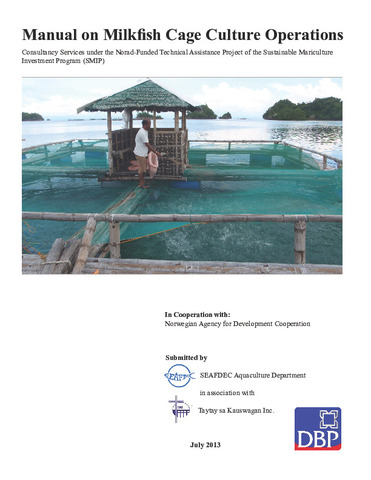Simulated transport of silver therapon (Leiopotherapon plumbeus) fingerlings at different durations and loading densities: Effects on survival and water quality
| dc.contributor.author | Aya, Frolan | |
| dc.contributor.author | Gutierrez, Reylan C. | |
| dc.contributor.author | Garcia, Luis Maria | |
| dc.coverage.spatial | Bay, Laguna de | en |
| dc.date.accessioned | 2024-06-05T07:26:37Z | |
| dc.date.available | 2024-06-05T07:26:37Z | |
| dc.date.issued | 2024-06 | |
| dc.identifier.citation | Aya, F., Gutierrez, R. C., & Garcia, L. M. (2024). Simulated transport of silver therapon (Leiopotherapon plumbeus) fingerlings at different durations and loading densities: Effects on survival and water quality. Philippine Agricultural Scientist, 107(2), 155–161. https://doi.org/10.62550/EA058023 | en |
| dc.identifier.issn | 0031-7454 | |
| dc.identifier.uri | http://hdl.handle.net/10862/6534 | |
| dc.description.abstract | The silver therapon, Leiopotherapon plumbeus, is being promoted as a new species for aquaculture. However, information on the optimal conditions for the transport of this species for grow-out culture needs to be established to avoid stress and unnecessary mortalities. This study examined the effects of duration of transport and loading density on survival and water quality during simulated transport of silver therapon (Leiopotherapon plumbeus). Hatchery-produced fingerlings [1.30±0.34 g body weight (BW); 44.30±3.77 mm total length (TL)] were held in double-layered oxygenated plastic bags at three transport durations (6 h, 9 h, and 12 h) and densities (40 fish bag-1, 80 fish bag-1, and 120 fish bag-1) in triplicates. Mean survival rates were not significantly affected by both duration of transport (P=0.321) and loading density (P=0.345). However, a highly significant effect of duration of transport on dissolved oxygen (DO) and pH (P=0.000), and a significant effect on Total Ammonia Nitrogen (TAN; P=0.039) and total bacterial count (TBC; P=0.034) were evident. Similarly, water quality parameters were significantly influenced by loading density (P=0.000), with lower DO and pH levels, and higher TAN and TBC recorded at 120 fish bag-1 density. Since a very high survival rate (>99%) is achieved at the highest loading density of 120 fish bag-1 up to 12 h transport, this density can be recommended to transport silver therapon fingerlings. However, chemical treatments using either salt, methylene blue, or tropical almond leaf extract in transport water may be used to reduce the high bacterial count during transport. | en |
| dc.description.sponsorship | This study was supported by the SEAFDEC Aquaculture Department (Br-02-F2015B). The authors thank M. J. Reyes, J. C. Unida, J. dela Cruz, Jr., R. Lazartigue, R. Celebre and N. Olorvida for counting and packing the fingerlings. | en |
| dc.language.iso | en | en |
| dc.publisher | College of Agriculture and Food Science, University of the Philippines Los Baños | en |
| dc.title | Simulated transport of silver therapon (Leiopotherapon plumbeus) fingerlings at different durations and loading densities: Effects on survival and water quality | en |
| dc.type | Article | en |
| dc.identifier.doi | 10.62550/EA058023 | |
| dc.citation.volume | 107 | en |
| dc.citation.issue | 2 | en |
| dc.citation.spage | 155 | en |
| dc.citation.epage | 161 | en |
| dc.citation.journalTitle | Philippine Agricultural Scientist | en |
| dc.subject.asfa | fingerlings | en |
| dc.subject.asfa | transport | en |
| dc.subject.asfa | duration | en |
| dc.subject.asfa | density | en |
| dc.subject.asfa | survival | en |
| dc.subject.asfa | water quality | en |
| dc.subject.scientificName | Leiopotherapon plumbeus | en |
| local.subject | fingerlings | en |
| local.subject | Leiopotherapon plumbeus | en |
| local.subject | loading density | en |
| local.subject | transport | en |
| local.subject | water quality | en |
このアイテムのファイル
| ファイル | サイズ | フォーマット | 閲覧 |
|---|---|---|---|
|
このアイテムに関連するファイルは存在しません。 |
|||
このアイテムは次のコレクションに所属しています
-
Journal Articles [1256]
These papers were contributed by Department staff to various national and international journals.




